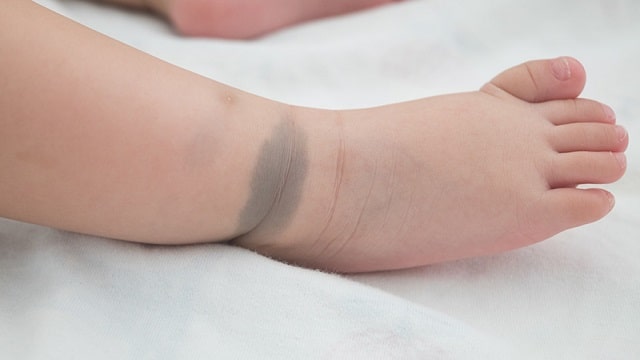Mongolian spots can be found on the surface of a newborn baby’s skin. However, not all newborns will have this mark. In general, the spots can be recognized by their bluish characteristics and not too large size. In the medical world, these birthmarks are called congenital dermal melanocytosis. These birthmarks can appear at birth or within the first week after the baby is born.
This condition is most often experienced by babies who are born with dark skin. Until now, the cause of the appearance of Mongolian spots is still unknown, but this condition is generally not associated with symptoms of a particular disease. If it does not develop or trigger health problems, the appearance of spots is not dangerous and does not need to be worried about.
Symptoms of Mongolian Spots
In addition to being harmless, Mongolian spots usually disappear or fade with age. Mongolian spots most often appear on body parts such as the buttocks or back, but can also appear on other body parts such as the hands, feet, face, and shoulders. In general, there are several symptoms or signs that the spots that appear are congenital dermal melanocytosis, including:
- Patches that feel flat to the touch with a normal skin surface.
- Blue in color rather gray.
- The most common location is the buttocks or back area but can be found on other parts of the body.
- Measuring 2 to 8 centimeters, although in some cases it can be wider.
- The shape of the spots is irregular.
- It usually appears when the baby is born or a week afterward.
- Mongolian spots do not disappear and do not change color within a few days, unlike bruises or contusions.
Causes of Mongolian Spots
The blue color of Mongolian spots is caused by melanocytes trapped in the dermis layer of the skin during migration to the epidermis. Melanocytes are cells that function to produce skin pigment or color in the skin. On its journey, these cells will move from the dermis layer to the epidermis, which is the outermost layer of skin during embryonic development. However, it is not yet known what causes melanocyte cells to become trapped and trigger Mongolian spots.
Risk Factors for the Appearance of Mongolian Spots
Since the exact cause of spots is unknown, the risk factors that can increase the likelihood of having Mongolian spots are also unknown. However, Mongolian spots are more common in Mongoloid races, namely East Asians, Indonesians, Polynesians, Micronesians, and Eskimos. Babies with dark skin are also said to be more likely to experience this condition.
Diagnosis
Some parents may feel worried and assume the bluish spots that appear as bruises. To be sure, parents can do an examination immediately after the spots are found. The diagnosis can be made by examining the bluish skin suspected of being Mongolian spots.
In general, this condition does not require other supporting examinations, except in unusual cases such as if the spots are very extensive and numerous or the spots are increasing rather than decreasing or fading. In such cases, Mongolian Spots are associated with inherited metabolic diseases, the most common of which are Hurler Syndrome, GM1 Gangliosidosis type 1, Niemann-Pick Disease. In cases like this, the doctor will suggest supporting examinations such as blood tests and skin biopsies may be performed to confirm the diagnosis.
Prevention
There is no known way to prevent newborns from getting Mongolian spots because the exact cause of Mongolian spots is not yet known.
Treatment
Mongolian spots are actually harmless and do not cause long-term health problems. These spots are not cancerous or precancerous lesions or indications of a particular disease, so there is no specific medical treatment.
In most cases, Mongolian spots will slowly fade and disappear during adolescence or near adolescence, although a small number will remain for life. Medical interventions that can be done for cosmetic reasons, for example, Mongolian spots on the face that persist into adolescence and are considered disturbing, can be done with laser surgery.
Possible complications of this condition include psychological impact on the child. Especially for spots that are clearly visible to others and spots that persist after adolescence.
When to See a Doctor?
If a baby or child has a congenital spot from birth, but it increases in number and area or the mother is not sure that the spot on the baby or child is a Mongolian spot or another disease condition, the baby can be checked immediately by a doctor. To do an examination. A medical examination should also be carried out immediately if certain symptoms appear, such as:
- Spots that reappear after disappearing,
- Spots do not appear immediately in babies, or only several months after birth,
- The spots change color,
- The spots widen and make the baby feel uncomfortable.
If that happens, immediately go to the doctor to confirm the condition of your little one.
